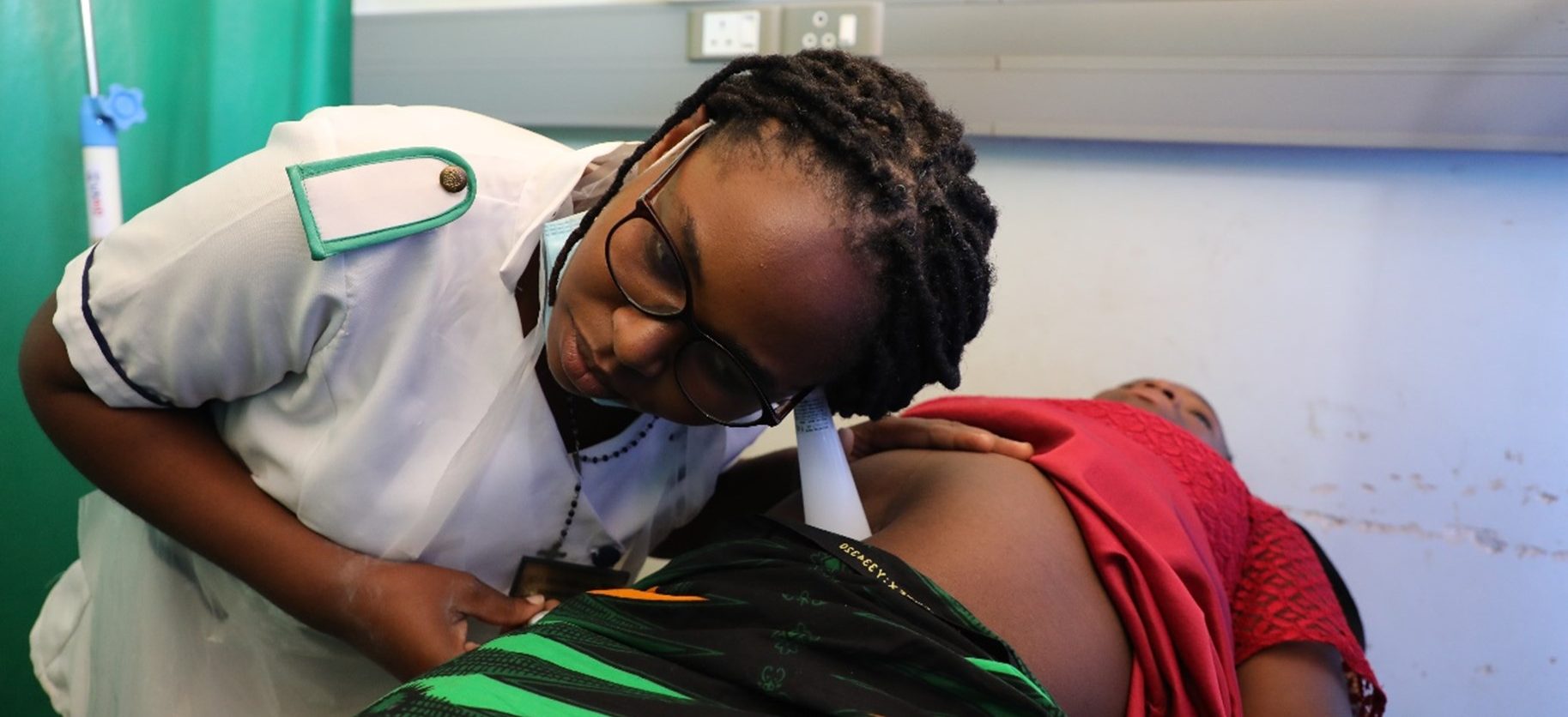New Maternity Ward in Malawi Transforms Care
Published on September 30, 2024

By Lusayo Banda, Communications Manager, MOMENTUM Tikweze Umoyo
Imagine a place where the joy of new life meets the formidable challenges of medical care. Kasungu Hospital, the primary referral healthcare hospital in Kasungu District in Malawi, has long been a source of hope for women facing emergency obstetric complications from surrounding health centers. However, until recently, the absence of a dedicated space for women in early labor meant that many were sent away, facing heightened risks and complications due to insufficient monitoring and privacy concerns.
Before a new ward opened on April 8, 2024, women in early labor often faced less-than-ideal conditions. Some were sent to wait just outside the ward, while others were sent to a highly congested waiting area approximately 100 meters from the labor ward. Although the waiting area is designed to accommodate 56 beds, it often housed double that number, compromising respectful maternity care by placing women in overcrowded conditions. Some faced delivery without proper monitoring. These arrangements led to a range of complications, including unfavorable delivery outcomes attributed to insufficient monitoring, space, and equipment. Records showed that close to 50 percent of women in the past were not monitored in the early stages of labor, exposing women and their babies to increased risk as a result of late identification of complications.
The Birth of the New Ward
The dream of a specialized ward became a reality through the support of the MOMENTUM Tikweze Umoyo project, which provided essential equipment like privacy screens, examination couches, delivery and patient beds, blood pressure machines, anti-shock garments, ultrasound scanner, fetal scopes and other resuscitation materials for both mothers and newborns. The new ward is designed to address the issues of privacy and accessibility, featuring separate areas for women in early labor and active labor. MOMENTUM collaborated with the District Health Management Teams (DHMTs) to establish a separate latent ward for women in the early stages of labor. The DHMT members agreed to repurpose a room previously used by caregivers into a dedicated space for women in early labor. The project also successfully advocated for the allocation of permanent and support staff to work in the ward as well as the allocation of additional beds, mattresses, and other equipment to complement those provided by the project. Additionally, needs-based maternal and newborn health mentorship and supervision were provided to health workers to ensure the effective delivery of quality care.

Improved Monitoring and Care
The new latent maternity ward includes two examination rooms and can accommodate 20-30 admissions within 24 hours, with 30-40 deliveries daily. This setup ensures that patients receive timely and respectful care. The hospital has also addressed privacy concerns by installing privacy screens and has ensured that all patients in early labor are reviewed by clinicians to provide timely interventions.
The ward is staffed by 18 midwives, with an additional 26 midwives dedicated to the labor ward. This substantial increase in trained professionals has led to significant improvements in patient monitoring and record-keeping. Senior Midwife Officer Pheby Nyondo highlights that the new arrangement allows for thorough reviews and timely interventions, which were less common before.”All those in early labor are now moved from the waiting home to the latent ward where they are reviewed by a clinician,” says Nyondo.
Dora Harawa, one of the clients of the new latent ward, noticed an improvement compared to the past. Admitted on May 5, she was immediately given a bed in the latent ward—an experience that was far different from her first pregnancy. ” During my first pregnancy, I was told to wait outside during early labor. With the new ward, I received immediate care and was closely monitored throughout,” she explains.

By June, the monitoring of pregnant women in labor increased from 59 percent to 78 percent and fetal monitoring increased from 55 percent to 66 percent.
As one of the nurse-midwives explains, “The support from MOMENTUM has allowed us to create a dedicated space for women in early labor, enhancing both their comfort and care. The advanced equipment has transformed how we monitor labor and respond to needs in real-time.”

